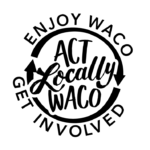By Candice Kelm
McLennan Community College’s has remained diligent in monitoring the restrictions set by federal, state, and local governments as the COVID-19 pandemic continues across the globe.
MCC faculty and staff returned to campus Monday following the winter break and are preparing for the beginning of the spring semester Jan. 11. Guidelines established before the start of the Fall 2020 semester to ensure a safe environment for students, faculty, staff, and all campus visitors will remain in place for the foreseeable future. These guidelines include smaller class sizes, face covering and social distancing requirements and increased cleaning procedures.
Additionally, the college will continue to offer classes in blended/hybrid and online formats along with some traditional face-to-face skills-based classes. Students in blended/hybrid classes experience instruction both in a traditional classroom setting and online formats, including through videoconferencing. These classes will be accessible to all students through MCC’s online platforms.
Campus computer labs will continue to support students with technology needs, and most services will continue to be offered through online and in-person formats.
For more information about the College’s COIVD-19 response, visit www.mclennan.edu/covid.
Individuals interested in becoming a MCC student this spring should visit https://www.mclennan.edu/admissions/become-a-student/index.html . Registration continues through Jan. 9 with most classes beginning Jan. 11. Second 8-Week Class registration will continue through March 14 with classes beginning March 15. For more information, contact Highlander Central at 299-8622 or [email protected].
The Act Locally Waco blog publishes posts with a connection to these aspirations for Waco. If you are interested in writing for the Act Locally Waco Blog, please email Ferrell Foster at [email protected].
By Lucas Land
With the new year beginning, people around the world take on the practice of making resolutions and goals about what they want to accomplish in the upcoming year. Resolutions can range from trying to eat better, exercise more, or spend more time with friends and family. But one resolution that should be directed toward the men in McLennan County is to consider becoming a CASA volunteer and help make a difference in a child’s life.

While men and women can both be CASA volunteers, the numbers of male volunteers are particularly low for McLennan County. Only 21% of CASA volunteers in McLennan County are male, while 53% of the kids in need of an advocate are male. And though women make wonderful CASA volunteers, they aren’t able to completely fill the hole of a positive male role model.
CASA volunteers not only advocate for the child throughout the entire court case, but they also meet with the child and provide a consistent positive influence for them during a very stressful time. They are the positive role models that children need when they are in foster care. Women are often seen as being more compassionate and caring toward children in difficult situations, but men are able to be just as compassionate and are equally as essential toward the growth and development of a child.
Growing up, every child wants to have a chance to spend time with a father figure and nurture a relationship that contributes to their development, but this is particularly important for young men. Male children with a positive male role model are more likely to perform better in school and have more career and economic success. Male role models foster more confidence in male children and contribute to stronger communication skills, as men often communicate in different ways than women.
CASA volunteers are required to maintain a year-long commitment to their case, and most volunteers meet with their child at least once a month and research the case for around 15 hours a month. During this new year, men should consider becoming CASA volunteers to help shape and contribute to the lives of children who need them in McLennan County.
If you are interested in supporting the work that CASA does to serve children in this situation, consider becoming a CASA volunteer. You can learn more about it by visiting https://casaforeverychild.org/volunteer/become-a-casa/.
Lucas Land is director of communication and development for CASA of McLennan County. He loves living in Waco and finding ways to connect, get to know, and give back to this community. Lucas lives in the Sanger Heights neighborhood with his spouse, three kids, and their dog, Jayber.
The Act Locally Waco blog publishes posts with a connection to these aspirations for Waco. If you are interested in writing for the Act Locally Waco Blog, please email Ferrell Foster at [email protected].
By Catherine Haynes Bauer
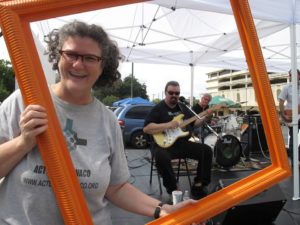
It goes without saying that 2020 has been a challenging year. Act Locally Waco was born out of a desire by our founder, Ashley Bean Thornton, to build community in Waco, and to bring people together who shared a desire to make Waco a better, more productive, and connected place. It began very simply as a means to communicate what was happening in the community in one central place and grew to include The Whole Enchilada newsletter, guest blog posts, a book club, a thriving community of contributors and readers, and so much more.
In the context of 2020 and a global pandemic, when so many events and gatherings have been canceled and postponed, it has never been more important to find new ways to build community. As Wacoans have evolved to adapt to new ways of gathering and sharing ideas amidst a global pandemic, so too has Act Locally Waco had to explore how to evolve. 2021 ushers in for us a new era as we adapt to the changes in the world and uncertainty regarding when we’ll be able to gather together in physical spaces. With the arrival of a vaccine we look forward to having more events and gatherings to promote and new ways to engage with our community in 2021 and beyond.
Forward-looking nonprofits with forward-looking founders plan for the future and equip their organizations to exist in perpetuity. And Ashley, our devoted founder, did just that. After pouring many years of her heart and soul into Act Locally Waco, Ashley decided in 2020 that it was time to establish a 501(c)3 nonprofit organization in order allow ALW to expand and grow. She selected a founding board of directors made up of like-minded, passionate community leaders who were similarly devoted to supporting Waco and building a robust and diverse community. Those individuals include: Catherine Haynes Bauer, Cory Dickman, Ferrell Foster, Jillian Ohriner, Cuevas Peacock, and Alfred Solano. As a board entrusted with upholding Ashley’s vision for Act Locally Waco and committed to ALW’s loyal followers, it has now become our responsibility to plan for Act Locally Waco’s future. Beginning in 2021, Ashley is turning over the reigns of this dynamic organization to us, her carefully selected board members, and we are honored to continue her mission and vision for Act Locally Waco.
As we eagerly anticipate the arrival of a new year and a fresh start, the board of Act Locally Waco would like to invite you to help us dream for the future, while expanding upon our capabilities and offerings. Please consider an end of year gift to Act Locally Waco to equip us to serve our community well into the future. We look forward to sharing the exciting ways in which Act Locally Waco will be evolving in the future. And we’d also love to hear your ideas and desires for how we can together make Act Locally Waco a better and stronger resource for the Waco community. Join us on social media or send us an email to let us know what ideas you have….and please don’t forget to remember us in your end of year giving. You might also consider an end-of-year gift in honor and recognition of Ashley Thornton’s countless contributions to Act Locally Waco as we thank her for her service and boundless devotion. Here’s to a happy and healthy New Year! On behalf of Ashley Bean Thornton and the new ALW board of directors, thank you for reading and for your continued support. Stay tuned for good things to come in 2021 and beyond.
With gratitude and hope,
Catherine, Cory, Ferrell, Jillian, Cuevas, and Alfred

By Ashley Bean Thornton
It’s a cliché to say that the giver receives more than the getter when it comes to community work – but despite the best efforts of dozens of English teachers in my life – I can’ think of any better way to start these musings than to acknowledge that universal truth. If you are reading this post you are no doubt at least familiar with Act Locally Waco, hopefully you are one of our dedicated readers! I started Act Locally Waco in 2008 and it has been my main form of “community service” ever since. I hope you are enjoying it! I doubt you enjoy reading it as much as I have enjoyed sharing it with you.
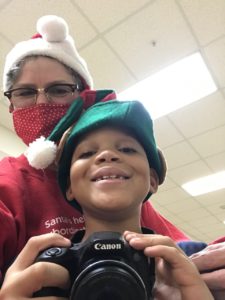
In January I am stepping back from leading Act Locally Waco. Don’t worry – ALW is not going anywhere! I am leaving it capable hands! I’m not going anywhere either. I am excited to be able to focus my energies on the Transformation Waco AfterSchool Academy – a part-time job that has become a passion.
Even though I am looking forward to handing over the reins to ALW, I hope you will indulge me in a little reminiscing and a little philosophizing as I turn the page on one chapter and look forward to the next.
My family moved around quite a bit when I was growing up – I had lived at 18 different addresses by the time I was 18. Although we lived for quite a while in Baytown, Texas, where I graduated high school, I never really felt like I had a hometown. Maybe that’s why I didn’t get involved in any particular community until pretty late in life – in my 40’s. When I did finally start getting involved, that community was Waco. I’ve now lived here far longer than any other place I have lived in my life. It’s not technically my hometown – but it’s the closest I will ever have to one!
Until I started getting involved in Waco, the communities and cities where I lived were just backdrops to my life. I might not have liked everything about a particular place, but it never occurred to me to care enough to try to build or change things to make it better. I was a consumer of community – if I didn’t like something, well, that was someone else’s fault. “They” needed to fix it! The biggest thing I have learned through Act Locally Waco is that there is no “They” — only “We.” If WE want our community to be better in some way, then WE need to get moving. Loving a community comes from taking responsibility for it, from looking at it as a creator, not as a consumer.
When I moved to Waco, now more than twenty years ago, Waco was a different place. You can see some of the differences – think back to the Austin and Elm Avenues of 1996! But for me the biggest difference is less tangible. Then I saw Waco as OK, but maybe boring. Now it hums with energy, creativity, friendship. I think what changed is my perception of my community.
It is my nature to be an observer more than a do-er. Maybe that’s why when I finally decided to get involved in my community, I chose to do something that allowed me a panoramic view. Through Act Locally Waco I’ve had a front row seat to observe artists, entrepreneurs, city council, the police, the Public Health District, the schools, a jillion non-profits – and that’s just part of the list! I’ve observed people giving every kind of gift from picking up trash, to painting a mural, to starting a business, to writing a 40-year comprehensive plan for the city. It has opened my eyes to the glorious complexity of 138,183 people living and working together.
As I shift my focus from Act Locally Waco to AfterSchool I want to remember some of the things I have learned.
Do something – We all need the superheroes who do amazing things – the mayors and elected leaders and superintendents and presidents and executive directors – but in addition to that we need the collective power of everyone doing something: picking up litter one Saturday, tutoring one child, buying art from a local artist, eating at a local restaurant. A couple of thousand of us doing a little something gets more done than any one person could possibly get done on his or her own.
Start small and keep going – Think about the kind of community you want to live in, then do the smallest thing you can think of to move Waco in that direction. The smallest thing we actually do is more powerful than the biggest thing we daydream about, but never start. If you want a walkable community, take walk, then read a book about walking, then go to a meeting about walking, then, then, then. If you want better education, run through some flashcards with your kid, then tutor another kid, then read an article about the school board in the paper, then vote for a school board rep, then join the PTA, then, then, then….
Get to know people who are different from you – Get to know people who are richer and poorer, people with skin a different color from yours, people with different political beliefs, different jobs, a different church or a different kind of faith. You don’t have to be best friends with everyone, but a healthy network of loose connections that cross boundaries is the secret sauce to being able to get things done as a community.
Say thanks more often than you complain – People are working hard and putting their heart into our community. “They” are not “they” – they are us.
And with that final point in mind, Thank you! Thank you for all you are doing to make our community great! Thank you for reading Act Locally Waco and getting involved! Thank you for writing blog posts and sharing Facebook posts and standing with me under a tent when it was 100 degrees outside signing up subscribers. Thank you for donating. Thank you for coming to book club and going on walks. Thank you for coming to events because you heard us talking about them on KWBU. Thank you for talking to one of our interns. Thank you for BEING one of our interns. Thank you for buying and wearing a T-shirt. Thank you for getting your picture taken in the Big Orange Frame. Thank you for all the gifts you have given me! Thank you for being my community! Looking forward to seeing you in the New Year!
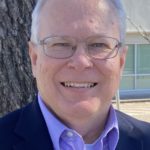
Beginning January 1, 2021, the Interim Executive Director of Act Locally Waco will be Ferrell Foster. Ferrell’s “day job” is being the Content Specialist for Care and Communication at Prosper Waco. He is a graduate of East Texas State University in Commerce, New Orleans Baptist Theological Seminary, and Hardin-Simmons University in Abilene, where he earned his doctorate focusing on African American perspectives on justice. A native of Dallas, Dr. Foster has spent most of his professional life as an ethics and justice advocate and communications leader, including time as editor of three publications. His email is [email protected].

This Act Locally Waco blog post is by Ashley Bean Thornton, she founded Act Locally Waco in 2008 and now works for Transformation Waco helping to coordinate afterschool programs. She likes to walk and write highly questionable stories about Waco History. She spends an outrageous amount of time at Whataburger.
The Act Locally Waco blog publishes posts with a connection to these aspirations for Waco. If you are interested in writing for the Act Locally Waco Blog, please email [email protected] for more information.
For many, the holidays are a time of tradition, new memories sprinkled among old memories, and the comfort and certainty of family. As we all know, 2020 and COVID-19 have thrown the holidays for a loop this year! We are scrambling to alter or cancel plans for safety, figure out new ways to carry out old traditions and keep in touch when we can’t be face-to-face. This admittedly feels chaotic, unwelcome, and out of our control.
Even in a year when we aren’t facing a global pandemic, children in foster care experience sudden and drastic life changes that feel chaotic, unwelcome and out of their control. Through no fault of their own, they are removed from their original family due to allegations of abuse or neglect, causing many facets of life as they knew it to suddenly shift. In addition to the initial trauma of the abuse or neglect they may have experienced, they now may be placed with relatives, foster parents, or in a residential facility, possibly in another city, likely enrolled in a different school, away from friends and familiar faces. Their life becomes inundated with new faces…caseworkers, attorneys, therapists, teachers, foster parents, or caregivers. For many children in foster care, the only constant is change.
If you pull this description into holiday time, you can see that it sets children and youth in foster care up for a holiday experience they didn’t bargain for. Caseworkers work hard to set up holiday visits with families of origin, but they often do not fall on the holiday itself and, this year due to COVID, are likely virtual. Some of this likely sounds familiar to a lot of us who have had our own holiday plans upended. There is a string of similarity between those situations and the reality of children in foster care during the holidays. It’s all in the interest of safety. Safety for our health, safety for children.
The hope in both situations is to be able to return to our prior norms in a safe manner. Just as we all look forward to the day when we can return to our routines without threat of COVID, the hope is always for children in foster care to be able to return to their family of origin, if it has been deemed safe. As we experience this unique holiday season, may we remember the young members of our community in foster care and hope for their safety and wellbeing.
If you are interested in supporting the work that CASA does to serve children in this situation, consider becoming a CASA. You can learn more about it by visiting https://casaforeverychild.org/volunteer/become-a-casa/. You can also give the gift of CASA this year by donating at http://casaforeverychild.org/give/.

Though born and raised in Fredericksburg, Anna Futral has called Waco home for sixteen years. She is a graduate of Baylor University, where she received her Bachelor of Business Administration in Accounting and a Master of Taxation. She built her career as a Certified Public Accountant at JRBT, where she worked for over ten years, specializing in service to nonprofit clients, prior to joining CASA of McLennan County in May of 2017. In addition to her business acumen and administrative leadership skills, Anna brings to CASA a deep-seated passion for children in foster care. She and her husband, Trent, are former foster parents and adopted their three children from foster care in 2016. When she’s not busy leading CASA forward or chasing her kids, ages 5, 6, and 7, Anna enjoys reading, spending time with good people, and working with her husband on their 120-year-old house in the heart of Waco.
By Paula Solano
As the year 2020 comes to an end, many of us begin to think about New Year’s resolutions. Resolutions are often associated with nutrition, physical activity, spending more or less time doing something. Changing habits or behaviors can be challenging, but not impossible.
What are some of your New Year’s resolutions? Feel free to share! Honestly, I cannot recall the last time I made a New Year’s resolution. Most of my resolutions become lifestyle changes, changes I adopt throughout the year.
One of my resolutions or lifestyle changes was self-care. Through this change, I make time to decompress, rest, and reflect. Then, I proceed with all my responsibilities, many of which revolve around my home, work, and school.
As I reflect on the past year and all the pieces that encompass my daily life, something that has changed in my household is preparing meals as a family and having meals at home. I’ve learned that a little effort and planning will save unnecessary trips to the grocery store, or we just have to get creative.
Similarly, I’ve observed how my daughters look forward to helping, and I hope their enthusiasm will continue. Our plan for the holiday festivities — keep it small, keeping those who have lost a loved one, their employment, or are struggling near and dear in our prayers.
During my time with the Family and Community Health unit of Texas A&M AgriLife Extension Service in McLennan County, I’ve gained increased understanding related to various programs offered by FCH and have applied much into my daily life — nutrition education, food safety, and selecting and storage of fresh fruits and vegetables. I’ve learned that eating healthy doesn’t have to be boring or expensive.
The seasonal vegetable for this month’s Better Living for Texans blog post is the sweet potato. Sweet potatoes have a presence in Asian, Cuban, Puerto Rican, Latino, Mediterranean, Pacific Island, and Southern foods. Add a twist to your meals with a yummy sweet potato, enjoy them grilled, in a salad, as a snack, or mashed.
Nutritional Facts and Health Claims
While many factors impact one’s health, let’s take a look at sweet potato health benefits. Did you know sweet potatoes are low in sodium, cholesterol free, fat free, saturated fat free, and a good source of fiber? Sweet potatoes are also high in vitamins A and C.
Hypertension & Sodium: Since sweet potatoes are low in sodium, they can reduce the risk of high blood pressure when part of a low-sodium diet.
Coronary Heart Disease & Dietary Saturated Fat: A diet low in cholesterol and saturated fat can reduce the risk of coronary disease.
Cancer & Fiber Containing Grain Products, Fruits, and Vegetables: A low-fat diet containing fiber in grain products, fruits, and vegetables may reduce risk of some types of cancer.
High Blood Pressure/Stroke & Potassium: A diet containing a good source of
potassium could reduce the risk of blood pressure and stroke.
Shopping & Storage:
When shopping for fresh sweet potatoes, select those that are firm,
with smooth skin. Avoid those that have cracks, soft spots, or blemishes.
Sweet potatoes are also conveniently available frozen and in a can.
Store sweet potatoes in a cool, dark space for use within 3-5 weeks.
Get the Facts:
Wash your hands as recommended by the CDC, and clean contact surfaces often. The U.S. Department of Agriculture MyPlate provides recipes, tips, and resources to guide you in creating a healthy eating plan.
Start simple, download the MyPlate App, an easy-to-use app that will help guide you and track your progress.
Lentil Minestrone (source: MyPlate Recipe)
Cook Time: 80 minutes
Serving: 6
Ingredients
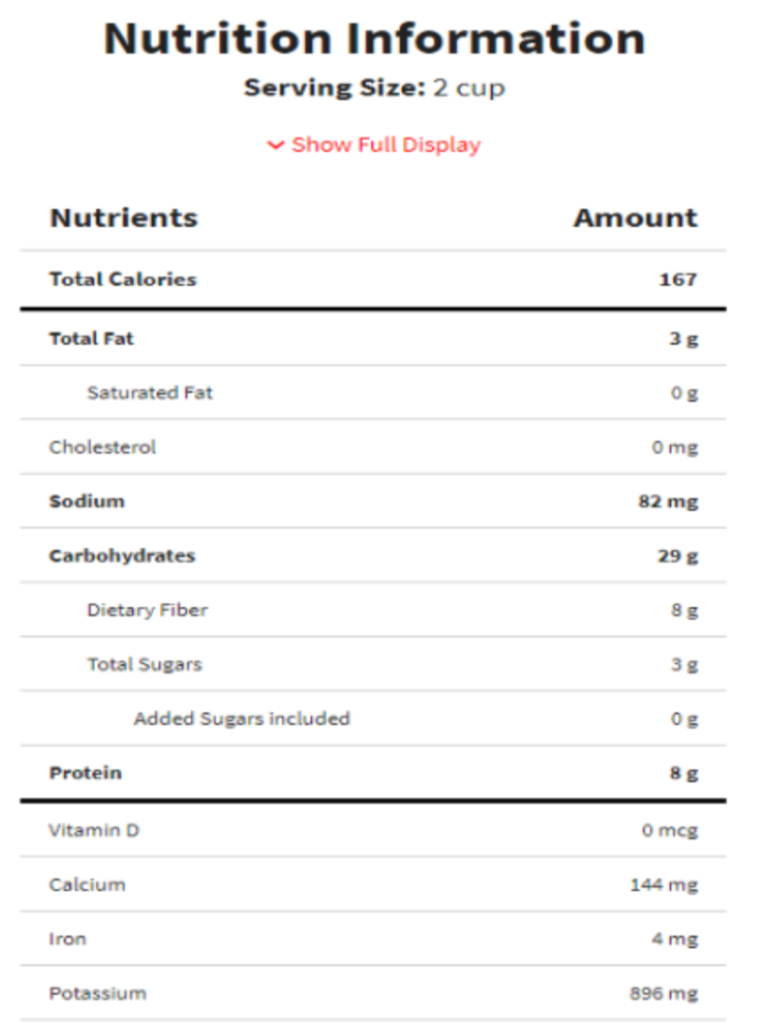
- 1 tablespoon olive or vegetable oil
- 1 yellow onion (peeled and chopped)
- 2 cloves garlic (peeled and minced)
- 3 carrots (scrubbed and diced into 1/4-inch pieces)
- 1 celery stalk (diced into 1/4-inch pieces)
- 1 sweet potato (scrubbed and diced into 1/4-inch pieces)
- 1 zucchini (diced into 1/4-inch pieces or 1 cup of frozen zucchini)
- 2 cups canned low-sodium, diced tomatoes (including liquid or fresh tomatoes)
- 1/2 cup lentils (brown or red)
- 8 cups water
- 1 cube low-sodium chicken bouillon
- 4 cups kale (washed and chopped into 1/4-1/2-inch pieces)
Directions
- Put a soup pot on the stove over medium-high heat. When the pot is hot, add the oil. Add onion and garlic and cook about 7 minutes until golden.
- Add carrots, celery, sweet potato, and zucchini and cook about 10 minutes until slightly tender.
- Add tomatoes, lentils, water, and chicken bouillon cube and bring to a boil over high heat. Turn the heat down to low, cover and cook 40 minutes.
- Add the kale and cook an additional 20 minutes. Serve right away or cover and refrigerate for up to 3 days.
Mock Southern Sweet Potato Pie (source: Choose MyPlate)
Prep Time: Approximately 1.5 hours
Servings: 16 portions
Bake Time: 60 minutes
Ingredients
Crust:
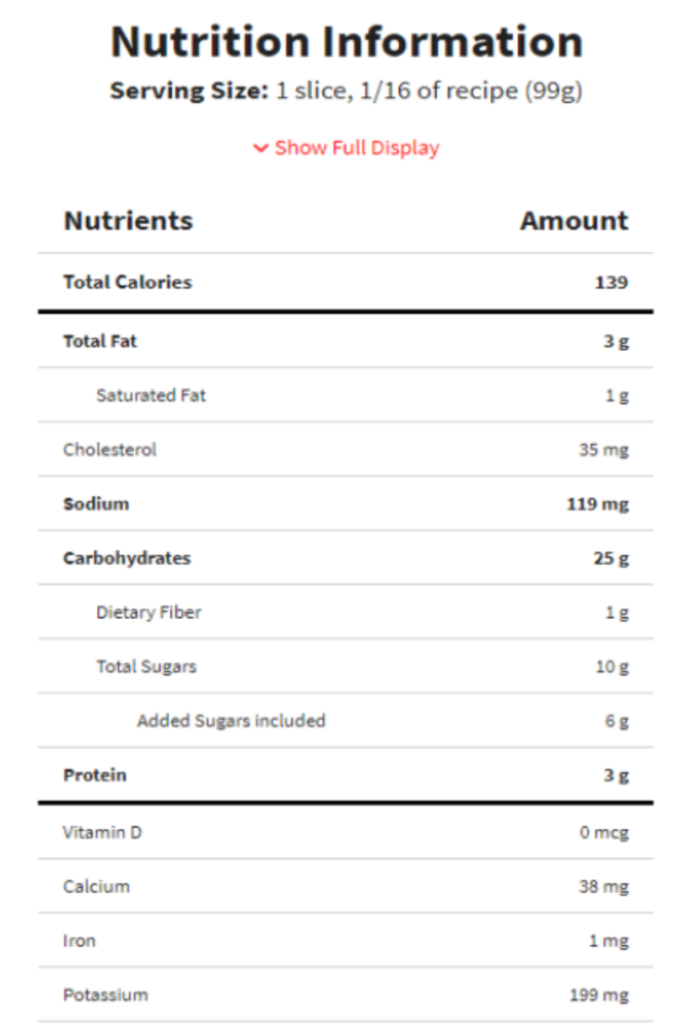
- 1 1/4 cups flour (all purpose)
- 1/4 teaspoon sugar
- 1/3 cup milk, non-fat
- 2 tablespoons vegetable oil
Filling:
- 1/4 cup sugar (white)
- 1/4 cup brown sugar, packed
- 1/2 teaspoon salt
- 1/4 teaspoon nutmeg
- 3 egg (large, beaten)
- 1/4 cup evaporated milk, non-fat (canned)
- 1 teaspoon vanilla extract
- 3 cups sweet potatoes, cooked, skin removed and mashed
Directions
Preheat oven to 350 degrees.
Crust:
- Combine the flour and sugar in a bowl.
- Add milk and oil to the flour mixture.
- Stir with fork until well mixed and then form pastry into a smooth ball with your hands.
- Roll the ball between two 12-inch squares of waxed paper using short, brisk, strokes until pastry reaches edge of paper.
- Peel off top paper and invert crust into pie plate.
Filling:
- Combine sugars, salt, spices and eggs.
- Add milk and vanilla. Stir.
- Add sweet potatoes and mix well.
- Pour mixture into pie shell.
- Bake for 60 minutes or until crust is golden brown.
- Cool and cut into 16 slices.
- Source:
National Heart, Lung and Blood Institute (NHLBI), Heart Healthy Home Cooking African American Style, p.24-25
Share your favorite sweet potato recipes with us.
Enjoy!
Paula Solano is a Master in Public Health student at Baylor University, certified Community Health Worker, and volunteering at the Texas A&M AgriLife Extension Service. A Waco native, Solano is passionate about serving her community, particularly underserved and underrepresented citizens.

The Act Locally Waco blog publishes posts with a connection to these aspirations for Waco. If you are interested in writing for the Act Locally Waco Blog, please email [email protected] for more information.
Due to the continued spread of COVID-19 and the challenges it poses to communities across Texas, Texas A&M AgriLife Extension and many others continue to practice public health recommendations. Whether we are communicating online or face-to-face know that program content will always be research-backed to help individuals navigate decisions for themselves and their families. For information on resources, ideas, and programs for yourself and family visit Texas A&M AgriLife’s HUB.
USDA is an equal opportunity provider and employer. This material was funded by USDA’s Supplemental Nutrition Assistance Program — SNAP. To learn more about the Supplemental Nutrition Assistance Program (SNAP) or to apply for benefits, visit www.yourtexasbenefits.com
References:
Fruits & Veggies (2020) Sweet Potato. Retrieved from: https://fruitsandveggies.org/fruits-and-veggies/sweet-potato/
Fruits and Veggies (2020) Top 10 Ways to Enjoy Sweet Potatoes. Retrieved from: https://fruitsandveggies.org/stories/top-10-ways-to-enjoy-sweet-potatoes/
By Anna Dunbar
2020 is drawing to a close. Whew! What a year. Time to start thinking about a new year, a new start, and new resolutions for a greener year!
Here are some ideas to get you started:
- Recycle that live Christmas Tree! Keep Waco Beautiful is hosting its annual “Chipping of the Green” Christmas tree recycling event on January 9th at Paul Tyson Field from 10-3pm. Bring your tree and watch how Waco Parks and Recreation mulches the tree.
- Live Christmas trees can also be left at residential curbside during green weeks in January for collection and mulching. Green weeks in January are the 4th-8th and 19th-22nd.
- Start recycling at curbside! Waco residents with cart residential trash service can request one or two blue recycling and/or green yard waste carts for no extra charge! Complete a request form on Waco-texas.com or our smartphone app Waco Curbside Services. You can also call (254) 299-2612.
- Recycle right! Please do not put Styrofoam, glass, plastic bags, plastics 3-7, or take-out food containers in your blue cart! Got questions? Check out the free smartphone app Waco Curbside Services.
- Speaking of Styrofoam, on December 12 there will be a Styrofoam recycling drop-off event by Waco Friends of Climate.
TIME: 9 AM until 1 PM
LOCATION: parking lot in front of Ocean Buffet, at the corner of Valley Mills and Waco Drives.
NOTES: Please wear masks and stay in your vehicle; volunteers will remove the material from trunk and back seats. Styrofoam cups and food containers are accepted, as well as larger blocks and molded pieces. Peanuts cannot be accepted. Please clean the Styrofoam and place small pieces in a bag. Please arrive early, as our truck may reach capacity. The service is free. Questions: [email protected] .
- Go to the Cobbs Center! Many people have a lot of extra recycling during the holidays. Boxes, glass or plastic bottles and aluminum cans abound during the holidays! Waco residents can also recycle big items (such as electronics and appliances) at the Cobbs Recycle Center. The Center is open Tuesday through Saturday from 8 AM until 5 PM and closed on Sunday and Monday. Go to waco-texas.com or call (254) 751-8536 to ask questions.
- Remember “Only Rain Down the Drain!” Please avoid putting anything (leaves, grass clippings, litter) into storm drains.
- Properly dispose of cooking oil! Small quantities of cooking oil can be mixed with kitty litter, doubled bagged, and placed in your trash cart. Please do not pour cooking oil or grease down the drain. You can also properly dispose of the cooking oil or grease at 5 stations located around the city; one location is at the Cobbs Center. For more information go to Waco-texas.com or call 299-CITY (2489) between 7:30 a.m. and 5:30 p.m. Monday through Friday.
- Join the Litter Challenge! If each person picks up and throws away just one piece of litter a day, they will have put 45 pounds of litter in its place by the end of the year.
- Check the solid waste calendar! Don’t forget the blue carts and green carts go at the curb on alternating weeks, never together! If you have questions, call (254) 299-2612.
- Take gently used items to resale or thrift stores instead of just throwing them away. Or, have a garage sale! Don’t forget to get a city permit!
- Finally, get involved in organizations that “do good” in our city! The wonderful organizations, clean litter, collect donations, recycle and more! Together we can do more!
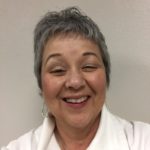
Anna Dunbar is the solid waste administrator for the City of Waco Solid Waste Services. She is responsible for informing Waco residents and businesses about recycling and waste reduction opportunities as well as solid waste services in Waco. Her husband is a Baylor professor and her daughter is a Baylor University alum who works at Horizon Environmental Services, Inc. Anna is an active member of Keep Waco Beautiful and The Central Texas Audubon Society.
The Act Locally Waco blog publishes posts with a connection to these aspirations for Waco. If you are interested in writing for the Act Locally Waco Blog, please email [email protected] for more information.
WACO — Waco will receive grants to strengthen the current teacher workforce and improve the pipeline of qualified teachers with the support of a $2.2 million grant over three years from the Bill & Melinda Gates Foundation.
The first initiative, University-School Partnerships for the Renewal of Educator Preparation, supports universities in the transformation of their program to financially sustainable, year-long residencies. Coalition member include Texas Tech University and Tarleton State University – both building and scaling a year-long residency that will produce well-prepared teachers in the Waco region in partnership with local school districts.
An Opportunity Culture grant will fund a creative staffing model that focuses on supporting sustainable residencies that are affordable for candidates at Waco and La Vega school districts. It also calls for creation of Greater Waco Teacher Community of Practice, a coalition of decision makers and stakeholders who will improve equity and quality for the teacher pipeline for all school districts in McLennan County.
Finally, the Center for Transforming Alternative Preparation Pathways (CTAPP), will provide support to McLennan Community College as it is innovating to improve its alternative teacher certification program.
“COVID-19 has put stress and demands on every school in Waco,” said Suzii Paynter March, CEO of Prosper Waco. “The strength and resiliency of the teaching profession is also under duress, and as a community we are using these opportunities to rally support for teachers of today and to recruit and grow strong teachers for tomorrow.
“The Greater Waco Teacher Community of Practice will be a forum of education leaders for discussion and innovation as we consider the entire teacher workforce landscape in our region,” March said.
The Opportunity Culture grant is designed to “leverage high-performing teachers in a multi-classroom leadership model,” Pereira said. In other words, it seeks to build on the excellence of the most effective teachers and will do that in conjunction with Texas Tech’s teacher residency program in Waco.
“One of the challenges that Waco ISD faces is a higher teacher turnover rate than many other districts,” said Susan Kincannon, Waco ISD superintendent. “We hope that the Opportunity Culture model will help retain our best teachers by offering them new opportunities to grow as educational leaders and better prepare the new teachers who will follow them in the classroom.”
“La Vega ISD is thrilled about the opportunity to participate in the Opportunity Culture grant,” said Sharon Shields, La Vega ISD superintendent. “The OC objectives support and expand on existing efforts in La Vega. The impact of OC in LVISD is unlimited. The potential and opportunity to replicate our most effective teachers will further improve our instructional programs leading to student success.”
US PREP, based in Lubbock, will work with the two universities – Texas Tech and Tarleton – in implementing sustainable, year-long residencies.
Public Impact, out of Chapel Hill, N.C., will work with the two school districts in implementing the Opportunity Culture program. The grant will fund a coordinator position at each district.
The second grant brings CTAPP to Waco. CTAPP, established in the Houston area, provides technical assistance to alternative teacher certification (ACP) programs, like the one already in existence at MCC.
“Most public school teachers in Texas pursue certification through the traditional route of earning a bachelor’s degree in teaching,” said Pereira. “But many people seek teacher certification after earning a degree in another academic area and working outside of education.
“This grant will bring specific expertise to Waco that enhances the alternative certification process for those who want to teach but do not have a teaching degree,” Pereira said.
Frank Graves, dean of workforce and public service at MCC, said: “McLennan Community College’s Alternative Teacher Education Program is excited about the partnership with CTAPP. The technical assistance and resources will enhance our program delivery and increase our teacher preparation mentoring process’s effectiveness.”
As part of the grant, CTAPP’s two employees became a part of the Prosper Waco staff in September — Chris Reid, director, and Mia O’Suji, director of content development and programming.
Reid and O’Suji have worked closely with Kristi Patton, MCC’s Alternative Teacher Program director, and her team to create a comprehensive plan, Graves said. “The result will be more highly trained teachers entering our local school districts.”
Reid noted that there is a teacher shortage in Texas and there also is a lack of quality teacher candidates. The state has created an environment for creation of ACPs to meet the training need. By partnering with ACPs, like the one at MCC, CTAPP provides “high-quality technical assistance to support the implementation of a rigorous, equitable teacher preparation model aimed at improving the quality of educators in classrooms.”
The Greater Waco Teacher Community of Practice is “designed to study the teacher pipeline in McLennan County with the intention of making improvements to the pipeline as a community,” Pereira said. “The pandemic has exposed areas of improvement in the field of education, and we are seeing that no one institution can do it alone. Together we must make the necessary improvements in order to have the teacher workforce needed for the future of our community.”
Several Waco churches are working to address specific needs of families associated with Transformation Waco schools. The churches are collecting goods and funds through Dec. 13 for the Christmas Family Resource Pantry.
Grassroots Community Development is coordinating the effort. Grassroots and Prosper Waco set up a Family Resource Pantry this past summer to help Transformation Waco school families suffering from the economic effects of the coronavirus.
“As we’ve begun to hear of specific needs of family from friends at Transformation Waco, we’ve decided to bring back the FRP to provide families with some of those needs over the Christmas break,” said Josh Caballero, a community organizer with Grassroots.
Transformation Waco is a nonprofit working within Waco Independent School District to manage and operate five schools and supporting the communities associated with those schools. The schools are Alta Vista Elementary, Brook Avenue Elementary, J.H. Hines Elementary, G.W. Carver Middle, and Indian Spring Middle.
For more information on the Christmas Family Resource Pantry contact Caballero at [email protected].
The following items are being collected:
- Toilet paper
- Shampoo
- Conditioner
- Bath soap
- Toothpaste
- Deodorant
- Bleach
- Dish soap
- Disposable masks
- Feminine products
- $25 gift card
(City council, school board, planning commission, county commissioners – these groups and several others represent us. They do the day to day work of running our community. It is our responsibility to keep informed about their work so that we can help them represent us effectively. “Civic Insights” by Jeffrey Vitarius is a regular feature of Act Locally Waco. Its purpose is to help us understand decisions that shape our community so that we can participate effectively as informed, engaged residents of Waco. – ALW)
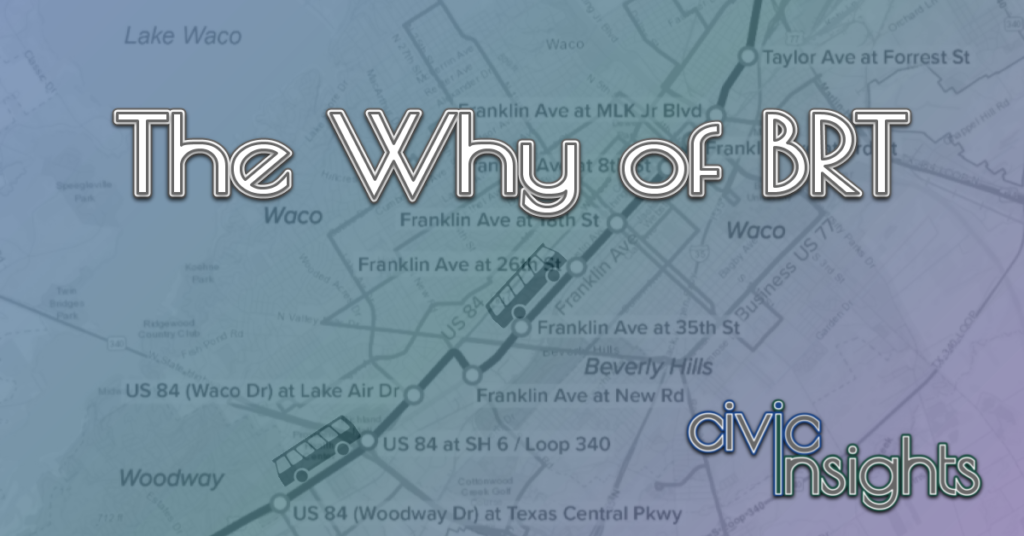
By Jeffrey Vitarius
We hope you all had a safe and enjoyable Thanksgiving and thought it might be good to start back up with a topic we find particularly interesting, bus rapid transit (BRT).
Next Thursday (December 10th, 2020) at 6:00 pm Waco Transit, the Waco Metropolitan Planning Organization (MPO), and AECOM Technical Services are hosting a virtual meeting to gather public input on station locations and designs for the BRT project. AECOM also recently provided updates to the City Council and MPO on the progress of the project. Let’s take a look at why this project is being considered and what stage of the process we are in now.
Way back in 2013-4, the City of Waco commissioned an Economic Development Strategic Plan from the W.E. Upjohn Institute for Employment Research. The study is generally called the Upjohn Report. Unlike a standard economic development strategy that focuses purely on the “general economic performance of the area,” the City “called for a plan to also reduce poverty, increase labor force participation, and increase area income.” That is, rather than focus on economic growth in and of itself, the plan also focused on how that growth might be made equitable for the people of Waco. This focus on equitable development rather than just any development remains an important goal of the City.
In the process of drafting their report, the Upjohn team interviewed ninety individuals, asking them (in part) about what challenges they see to finding and retaining employment. The result, “transportation was overwhelmingly cited as the most prominent barrier to finding and keeping a job.” In 2018, about 8% of Wacoans got to work by a means other than a car. At that time approximately 29% of Wacoan households had no car or 1 car. The average household size in Waco is about 2.5 people meaning that having one car could mean a household is still reliant on a non-car means of getting to work.
Although walking or cycling remain valuable commuting options for folks (your author does so whenever he can), needing to rely on your feet or your bike makes you vulnerable to long distances and poor weather (especially August heat). Given these challenges, it is critical for those in Waco who do not have ready access to a car that public transit gets people where they need to go reliably and as swiftly as possible.
The current Waco transit system is configured as a “spoke and hub.” In this design bus routes extend out from the City core to residential neighborhoods, job centers, and service locations before returning Downtown. The routes out and back are the “spokes” with the Downtown Transit Center as the “hub.” The transit map below shows how the various routes converge at the transit center downtown before spanning out across the city.
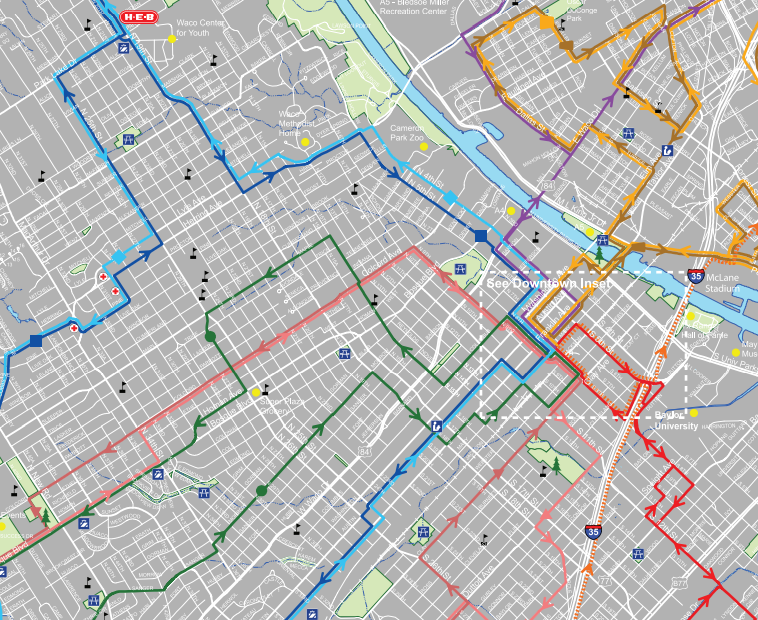
(Map 1)
This configuration has its challenges. The spoke and hub setup means that to get from one side of town to the other, an individual has to transfer at the “hub,” lengthening travel times. Additionally, the variety of routes mean that each route can only be run once an hour (in the case of East Waco the route runs varying directions based on what hour of the day it is).
BRT may be the solution to these issues. The BRT would run through the middle of the city extending from Woodway through Downtown Waco and on to Belmead and Lacy Lakeview. The BRT would make fewer stops and be timed to traffic. This would, theoretically, reduce the delays caused by passengers entering and exiting the bus as well as the delays caused by sitting in traffic. The goal of such a system would be to maximize the time the bus is in motion, therefore reducing travel times. It is also hoped that such a system would generate more frequent bus service and bus services that extend more into weekends and evenings (an important factor when considering whether folks can get to work when they need to).
In 2018, the City received a feasibility study from AECOM Technical Services that looked at the potential system overall as well as a number of route, technology, and service operation options. The study recommended (after substantial public input) a route that ran from US 84 to New Road to Franklin Avenue to Taylor Street and Hillsboro Drive before taking US 84 to Loop 340. On May 1, 2018 the City Council approved the recommended route. Below is the most recent map of the proposed route.
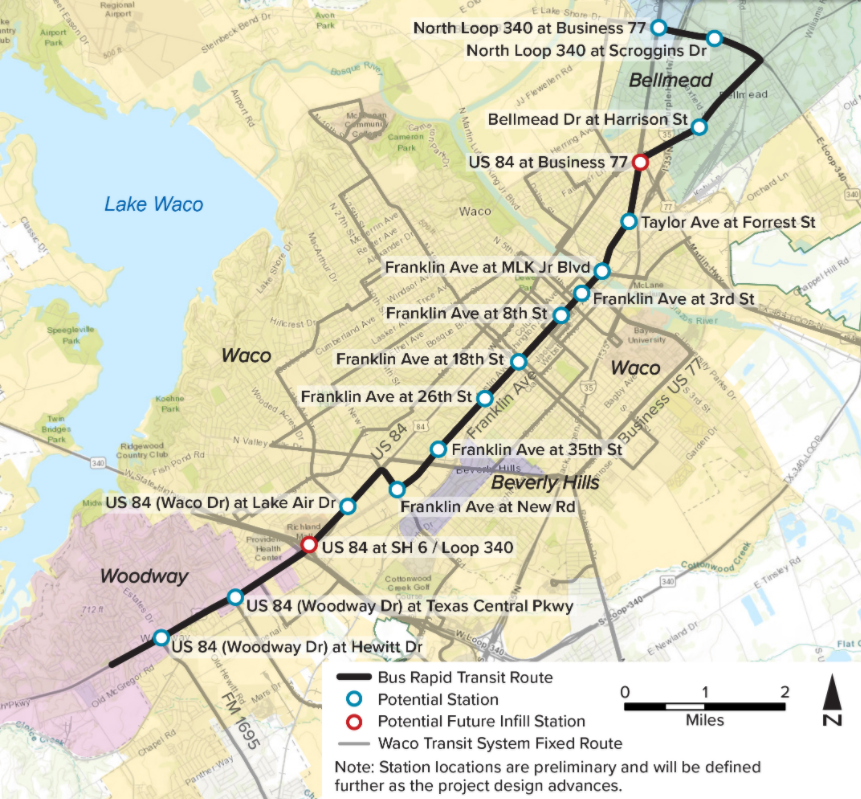
Since then, the City, the MPO, and AECOM have begun the process of seeking federal funding for the project. In July of 2019, pre-award authority was granted that allows the City to begin pursuing projected development costs before receiving a formal award. Under this authorization the City sought services for preliminary engineering and environmental review. We are in the middle of that process now.
Preliminary engineering (think of this as preliminary technical design) needs to be completed to understand the final costs of the project and pursue the funding needed to cover those costs. Environmental review is required to make sure the project will not unduly damage Waco’s environment. Throughout this part of the process there are three different periods of public input planned. The first passed in October, when AECOM sought to reintroduce the project to Wacoans and update them on the project approach. The second is the meeting coming up on December 10. This one will focus on where stations will be and how they will function. Both of these aspects can have a huge impact on cost and operations down the line. Finally, in mid-February it is anticipated that the final results for this phase of the project will be brought before the public for review.
Other Interesting Items from the Agenda (to me)
- Over the last two meetings City Council has received information regarding a Municipal Settings Designation (MSD). In short, this would reduce a hurdle to development in the city’s core by prohibiting the future use of groundwater as potable (safe to drink). Without a Municipal Settings Designation each property owner would have to deal with testing and remediating groundwater contamination before development which can slow projects in an area where the city provides water to all properties anyhow.
- The City and WISD are working on a partnership to provide all WISD students with e-cards that would grant them access to the library’s substantial e-book catalogue.
- The J.H. Hines Elementary Sidewalks project continues with the city pursuing $101,918.37 in property acquisitions to account for right of way needs.
Meeting Basics
- City Council meets on the first and third Tuesday of every month. Work session – 3:00 pm / Business session – 6:00pm (there have been two meetings since our last post)
- To watch the recorded session click here (City of Waco Cable Channel, wccc.tv)
- For the full agenda click here (11/17) or here (12/01)
- For the meeting packet with the documents pertinent to the meeting click here (11/17) or here (12/01)

Jeffrey Vitarius has been actively local since early 2017. He lives in Sanger Heights with partner (JD) and his son (Callahan). He helped found Waco Pride Network and spearheaded its Vision 2025 process. Jeffrey works at City Center Waco where he helps keep Downtown Waco clean, safe, and vibrant. He is a member of St. Alban’s Episcopal Church and graduated from Baylor in 2011.
The Act Locally Waco blog publishes posts with a connection to these aspirations for Waco. If you are interested in writing for the Act Locally Waco Blog, please email [email protected]for more information.
